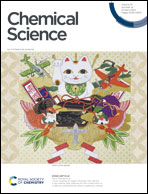Graphdiyne/metal oxide hybrid materials for efficient energy and environmental catalysis
Abstract
Graphdiyne (GDY)-based materials, owing to their unique structure and tunable electronic properties, exhibit great potential in the fields of catalysis, energy, environmental science, and beyond. In particular, GDY/metal oxide hybrid materials (GDY/MOs) have attracted extensive attention in energy and environmental catalysis. The interaction between GDY and metal oxides can increase the number of intrinsic active sites, facilitate charge transfer, and regulate the adsorption and desorption of intermediate species. In this review, we summarize the structure, synthesis, advanced characterization, small molecule activation mechanism and applications of GDY/MOs in energy conversion and environmental remediation. The intrinsic structure–activity relationship and corresponding reaction mechanism are highlighted. In particular, the activation mechanisms of reactant molecules (H2O, O2, N2, etc.) on GDY/MOs are systemically discussed. Finally, we outline some new perspectives of opportunities and challenges in developing GDY/MOs for efficient energy and environmental catalysis.

- This article is part of the themed collection: 2024 Chemical Science Perspective & Review Collection


 Please wait while we load your content...
Please wait while we load your content...